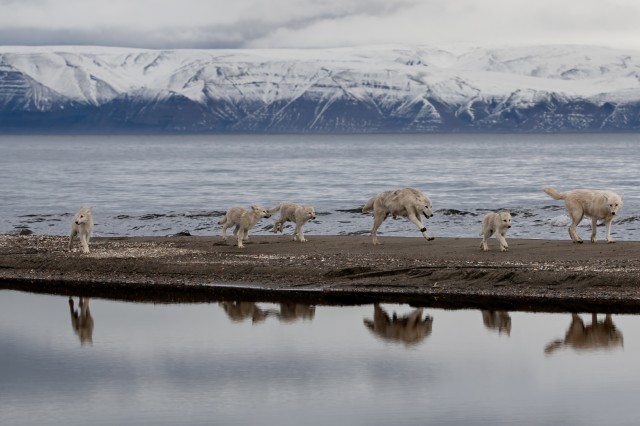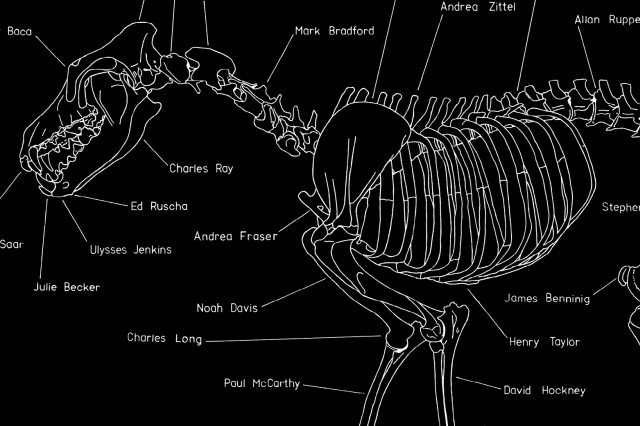The Dire Wolf: An Ice Age Angeleno
What’s the backstory of dire wolves, the most-found mammal at La Brea Tar Pits? Here are five juicy morsels about this extinct species that once howled through the Ice Age.
By: Jessica Portner
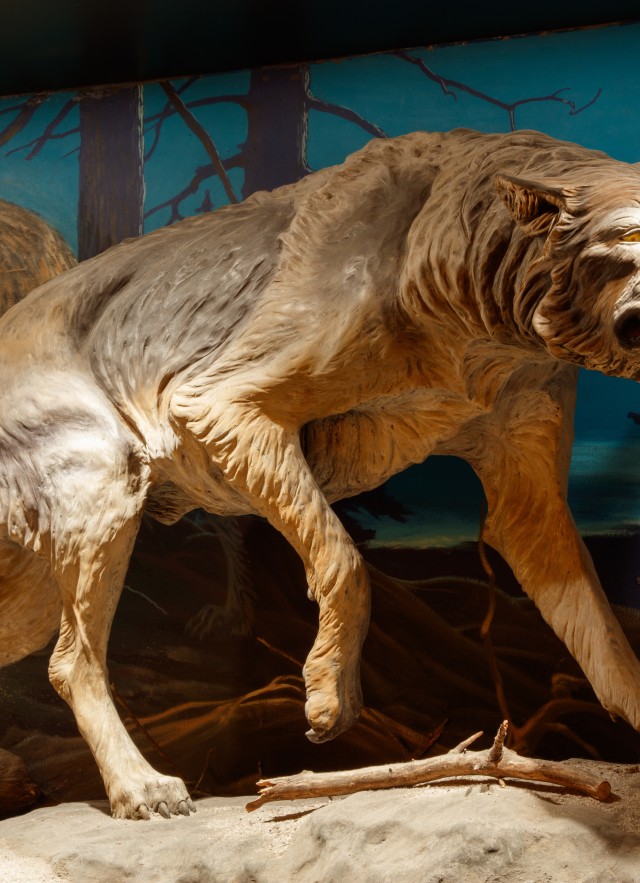
1. These infamous pack hunters prowled around Ice Age L.A., between 50,000 and 13,000 years ago. Aenocyon dirus (Aenocyon, from ainos, 'terrible' and cyon, 'dog') is the most commonly found mammal dug up at the Tar Pits—topping 4,000 specimens.
2. They're not actually wolves! Dire wolf is a different genus than dogs, wolves, and coyotes, which are all in the genus Canis. Surprisingly, their closest relatives are African jackals rather than the grey wolf. A study published in Nature has rewritten the natural history of the dire wolf.

Dire wolf
3. The Dire Wolf Wall at La Brea Tar Pits, which magnificently exhibits 400 skulls suspended in a Dayglo-orange display, allows visitors to go nose-to-nose with the fossilized noggin of the once-fierce predator.
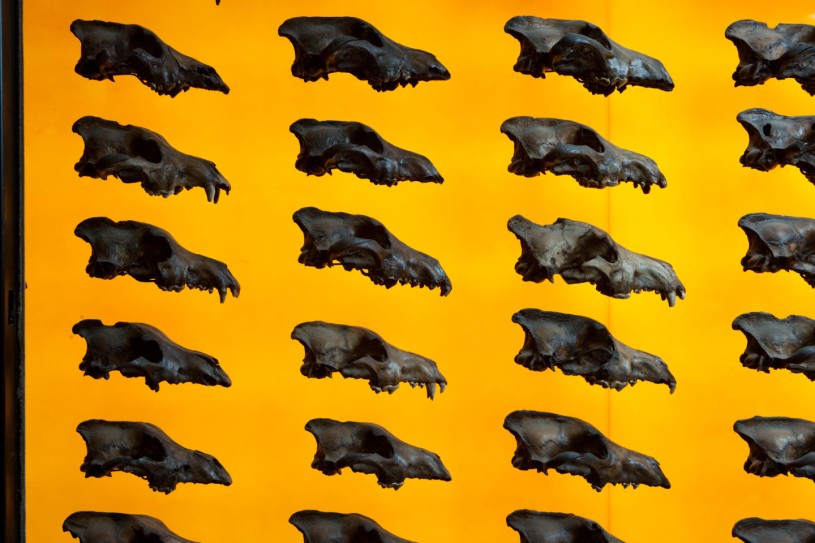
Dire Wolf Wall
Museum
One: yes, dire wolves are real. Two: we have a lot of specimens, like enough to make up an entire wall. Three: this isn’t even a quarter of them.
Museum
One: yes, dire wolves are real. Two: we have a lot of specimens, like enough to make up an entire wall. Three: this isn’t even a quarter of them.
Watch a time-lapse video of how the above was assembled.
,
4. Crunch time! Dire wolves hunted in packs which likely helped them take down large herbivores.
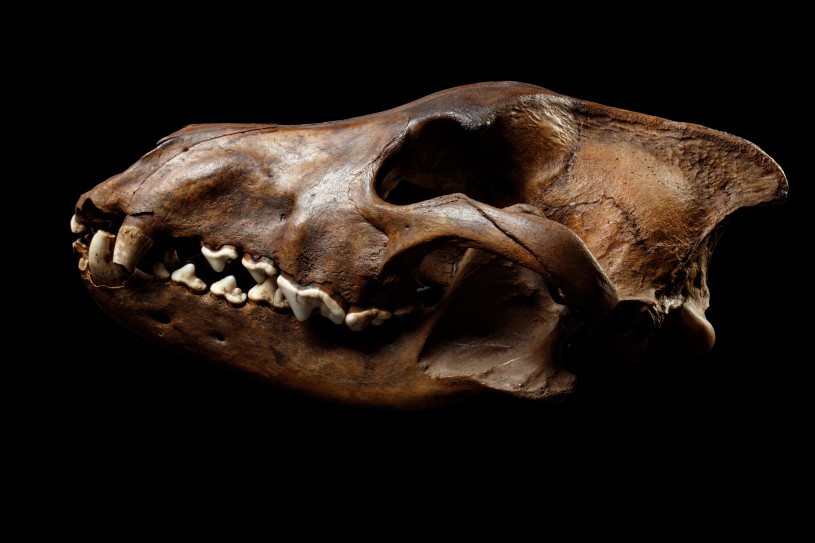
One of the 400 skulls comprising the Dire Wolf Skull Wall
5. "Dire wolves" as characters have stepped into fictional worlds. The Grateful Dead has a song called "Dire wolf" and they appear as royal pets in the popular series Game of Thrones. However, the CGI animals in the show look more like grey wolves but more robust, says Emily Lindsey, Associate Curator and Excavation Site Director at La Brea Tar Pits.
Learn even more about dire wolves and how they compare to other Ice Age predators from a La Brea Tar Pits researcher in this video.
Walk on into the museum at La Brea Tar Pits to see the Dire Wolf Wall as well as other megafauna like saber-toothed cats, mammoths and giant ground sloths, and then head outside for a self-guided tour and see if you can find where our expert paleontologists and volunteers dig up their bones!
